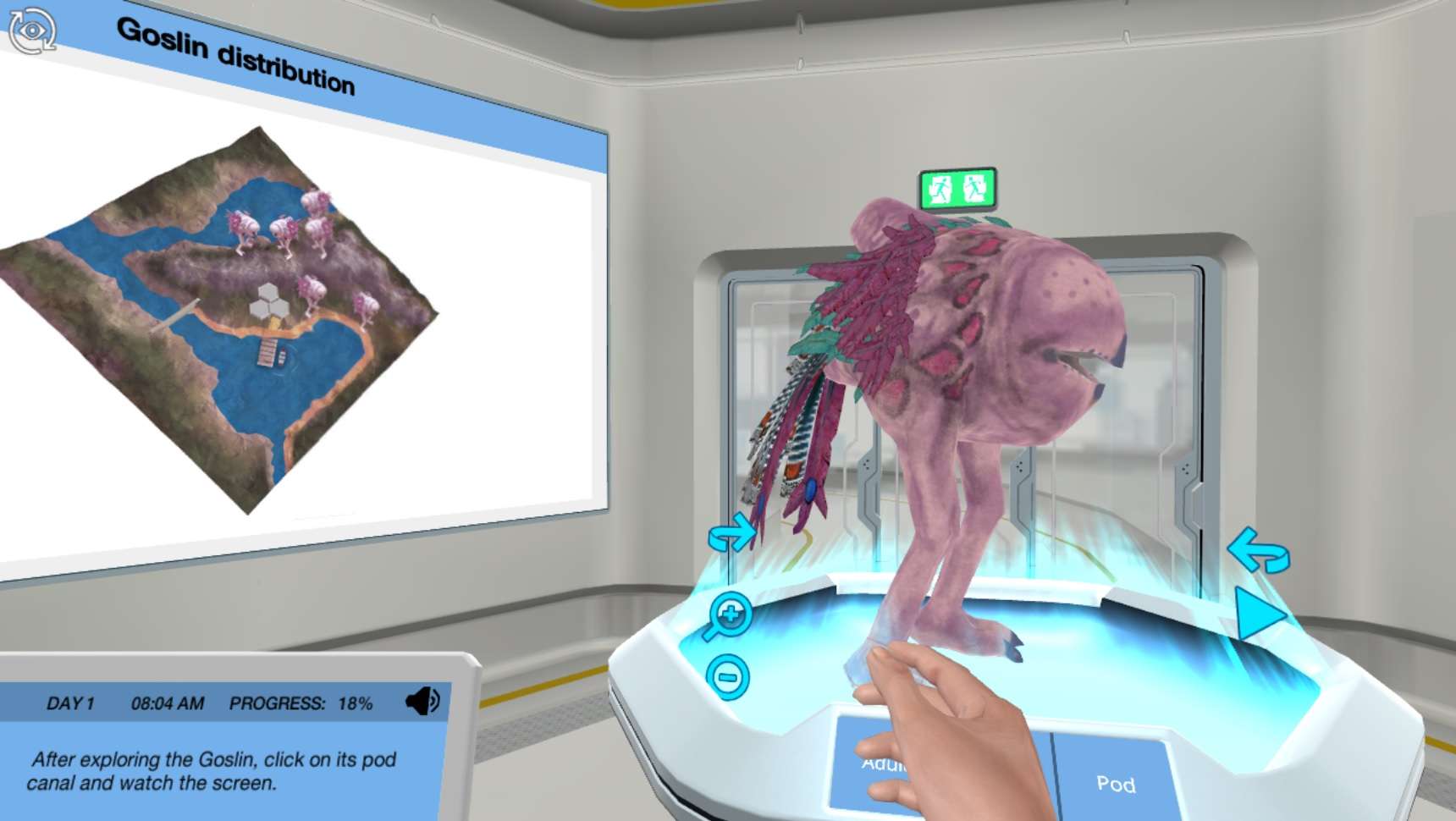Heading 1
Heading 2
Heading 3
Heading 4
Heading 5
Heading 6
Lorem ipsum dolor sit amet, consectetur adipiscing elit, sed do eiusmod tempor incididunt ut labore et dolore magna aliqua. Ut enim ad minim veniam, quis nostrud exercitation ullamco laboris nisi ut aliquip ex ea commodo consequat. Duis aute irure dolor in reprehenderit in voluptate velit esse cillum dolore eu fugiat nulla pariatur.
Block quote
Ordered list
- Item 1
- Item 2
- Item 3
Unordered list
- Item A
- Item B
- Item C
Bold text
Emphasis
Superscript
Subscript
About This Simulation
Help ecologists devise a conservation strategy that will protect the goslin population on a newly discovered exoplanet, Astakos IV.
Learning Objectives
- Assess the population structure using data from mark-recapture to estimate the average age of death and fecundity
- Predict the growth of a population using a mathematical model
About This Simulation
Lab Techniques
- Capture and marking
- Mark-recapture
Related Standards
- High level content, may support HS-LS2-1
- No direct alignment
- No direct alignment
Learn More About This Simulation
Welcome to science camp on Astakos IV, a newly discovered exoplanet! In this simulation, you will meet exciting creatures, learn about their population structure, and help devise a conservation plan.
Meet the goslins!
Near the science camp there is a lake where scientists have built a pontoon, a water filtering system, and some paths. Five years after their arrival here, the goslin population seems to be decreasing in numbers. Nearby, there is another more pristine lake, where goslins also live. The population here, it seems, has remained stable. Dr. One, your lab assistant, and Sophie, the chief ecologist, have been collecting data for the past four years, and now you get to help them collect data for year five! You will get to see and explore the goslins up close on the holotable and in the field. You will also get to watch a movie about how they lay their precious pods upwards onto the safety of the branches of zenroses! Before going to the field, you will learn about the goslin lifecycle and see some data that has already been collected. This data will help you to make a prediction about what the best conservation strategy for the species may be. Is it best to invest more in protecting the pods or the fertile adults?
Gotta catch them all!
As the evening approaches, you will find yourself in a canoe in the pristine lake, trying to find some goslins. They can be quite elusive sometimes! After deciding on the correct capturing technique and marking tool, you will work together with Dr. One to capture and mark young goslins. As well as this, you will recapture marked adults in order to collect more data for the current year.
Use your data to create a plan
Back in the lab, you will analyze the data, see if your initial prediction was correct, and come up with a conservation strategy that minimizes human impact and preserves the goslin populations on Astakos IV!
For Science Programs Providing a Learning Advantage
Boost STEM Pass Rates
Boost Learning with Fun
75% of students show high engagement and improved grades with Labster
Discover Simulations That Match Your Syllabus
Easily bolster your learning objectives with relevant, interactive content
Place Students in the Shoes of Real Scientists
Practice a lab procedure or visualize theory through narrative-driven scenarios


FAQs
Find answers to frequently asked questions.
Heading 1
Heading 2
Heading 3
Heading 4
Heading 5
Heading 6
Lorem ipsum dolor sit amet, consectetur adipiscing elit, sed do eiusmod tempor incididunt ut labore et dolore magna aliqua. Ut enim ad minim veniam, quis nostrud exercitation ullamco laboris nisi ut aliquip ex ea commodo consequat. Duis aute irure dolor in reprehenderit in voluptate velit esse cillum dolore eu fugiat nulla pariatur.
Block quote
Ordered list
- Item 1
- Item 2
- Item 3
Unordered list
- Item A
- Item B
- Item C
Bold text
Emphasis
Superscript
Subscript
A Labster virtual lab is an interactive, multimedia assignment that students access right from their computers. Many Labster virtual labs prepare students for success in college by introducing foundational knowledge using multimedia visualizations that make it easier to understand complex concepts. Other Labster virtual labs prepare learners for careers in STEM labs by giving them realistic practice on lab techniques and procedures.
Labster’s virtual lab simulations are created by scientists and designed to maximize engagement and interactivity. Unlike watching a video or reading a textbook, Labster virtual labs are interactive. To make progress, students must think critically and solve a real-world problem. We believe that learning by doing makes STEM stick.
Yes, Labster is compatible with all major LMS (Learning Management Systems) including Blackboard, Canvas, D2L, Moodle, and many others. Students can access Labster like any other assignment. If your institution does not choose an LMS integration, students will log into Labster’s Course Manager once they have an account created. Your institution will decide which is the best access method.
Labster is available for purchase by instructors, faculty, and administrators at education institutions. Purchasing our starter package, Labster Explorer, can be done using a credit card if you are located in the USA, Canada, or Mexico. If you are outside of North America or are choosing a higher plan, please speak with a Labster sales representative. Compare plans.
Labster supports a wide range of STEM courses at the high school, college, and university level across fields in biology, chemistry, physics, and health sciences. You can identify topics for your courses by searching our Content Catalog.















